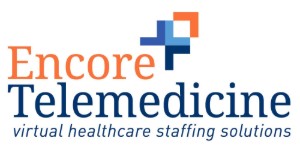Telehealth and the benefit to schools is becoming more and more apparent all the time. One telehealth case study conducted by Children’s Health in Dallas, TX, pointed out many of the benefits of implementing a telehealth program in schools, in that city and across the entire country. The findings of that case study made it clear that parents of school children frequently had difficulty in taking their kids to hospitals or to doctors’ offices, because it required them to take off work.
By providing telehealth care right within the framework of the learning institution, students could be connected with healthcare professionals quickly, and in a non-stressful environment. The program has proven extremely successful, and has allowed the Children’s Health network of physicians to provide far better care than was previously available in the city and in the state.
Benefits of Telehealth to Schools
Another factor with telehealth and the benefits to schools is that those school districts which simply can’t afford to supply medical personnel to all schools are still able to offer healthcare using technology associated with telemedicine. Then too, even at schools where nurses are in residence, they are often overwhelmed by the sheer volume of medical issues confronting students on a daily basis. These can be simple physical problems, or they can be complex behavioral and emotional issues for children suffering from various mental health issues.
According to the American Telemedicine Association, the kind of technology used in school telemedicine includes the usage of interactive videoconferencing as well as store-and-forward transmissions. Together, these two practices can accomplish a great many solutions for medical issues which schoolchildren have to deal with.
Already, telemedicine sessions have covered a wide spectrum of problems including nutritional counseling, dental screenings, behavioral and mental health, chronic disease management, acute care, speech therapy, and prevention and health education. All that’s really needed to enable telehealth sessions are a desktop PC or a laptop with a video link, and the school can be connected with a doctor at a nearby hospital, or any other medical expert at a nearby clinic.
How States Approach Telehealth in Schools
A huge number of school districts have partnered with health systems in this country in order to provide telehealth-based care to their schoolchildren. The state of Texas enabled a law in 2015 which allowed physicians to establish a video-based teleconference with students, provided that the student is enrolled at school and is a participant of the state’s Medicaid program for disabled or low income students.
According to the spokesman for Pediatrics at Texas Tech University Health Science Center, approximately 90% of all medical situations which could be handled in a generic pediatric clinic can also be handled via a telehealth session. Since that institution has had a telehealth program in place for more than a decade now, it would seem to be an appropriate advocate for the system, and for what it can achieve.
In South Carolina, school telehealth programs were embarked upon by first identifying those schools in the poorest regions of the state, where children typically went straight to the emergency room of a hospital. After implementation of the telehealth program, those ER admissions were significantly reduced, and better care was provided for children at those schools. With this initial success of the program, it is being expanded now to more schools statewide. This same success story is being repeated throughout the states of this country, as more schools learn about telehealth and its benefit to schools.
Effectiveness of Telehealth in Schools
Surprisingly, only about 40% of schools in this country can provide a full-time nurse for children’s healthcare, according to statistics provided by the National Association of School Nurses. While that would seem to be a crisis of sorts, the problem is being mitigated to a large extent these days by the increasing prevalence of telemedicine. More and more, children who are sick or in some need of medical care, can simply report to a designated area which has a video conference connection, and can be put in touch with a medical professional who can provide the necessary care.
It’s even possible for specially connected stethoscopes and otoscopes to carry out preliminary examinations of throats, ears, noses, and heartbeats remotely. Telemedicine has made it possible for children who suffer from chronic conditions to remain in school and receive the treatment they need, as well as for more complex conditions to be handled by medical specialists.
Encore Telemedicine
All those schools which have inadequate medical care, either because they’re overwhelmed by student needs, or because no student nursing is available, should consider the implementation of facilities for telemedicine. Encore Telemedicine has a number of virtual staffing solutions which your school can take advantage of to relieve the stress on overworked medical personnel, or to provide care where none currently exists. Contact us at your convenience for consultation about solutions we can provide for you.

